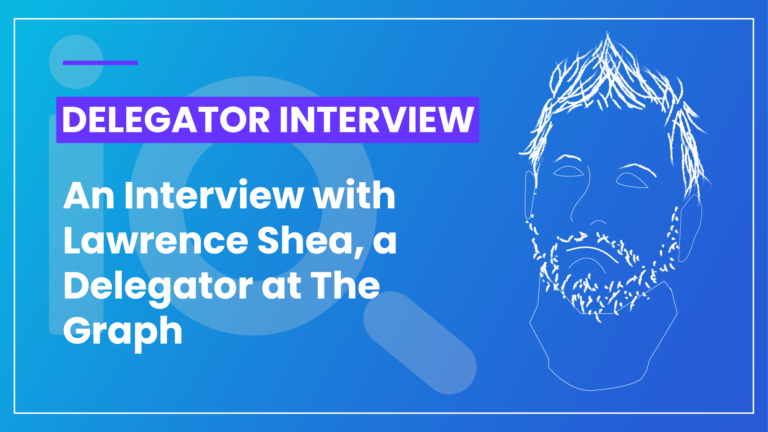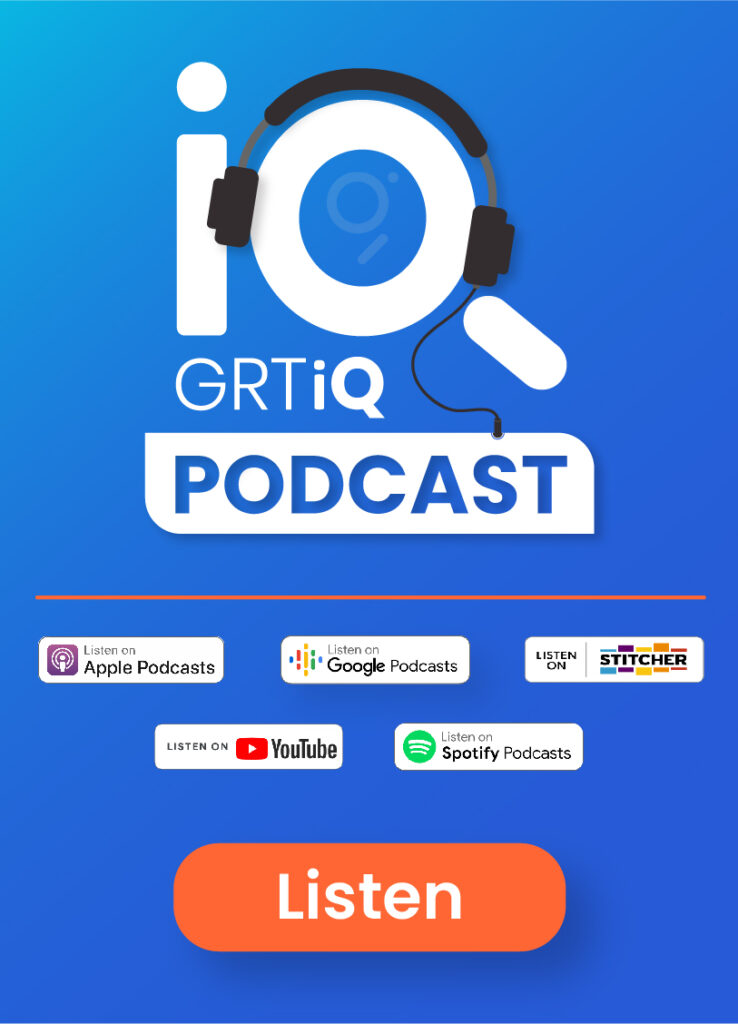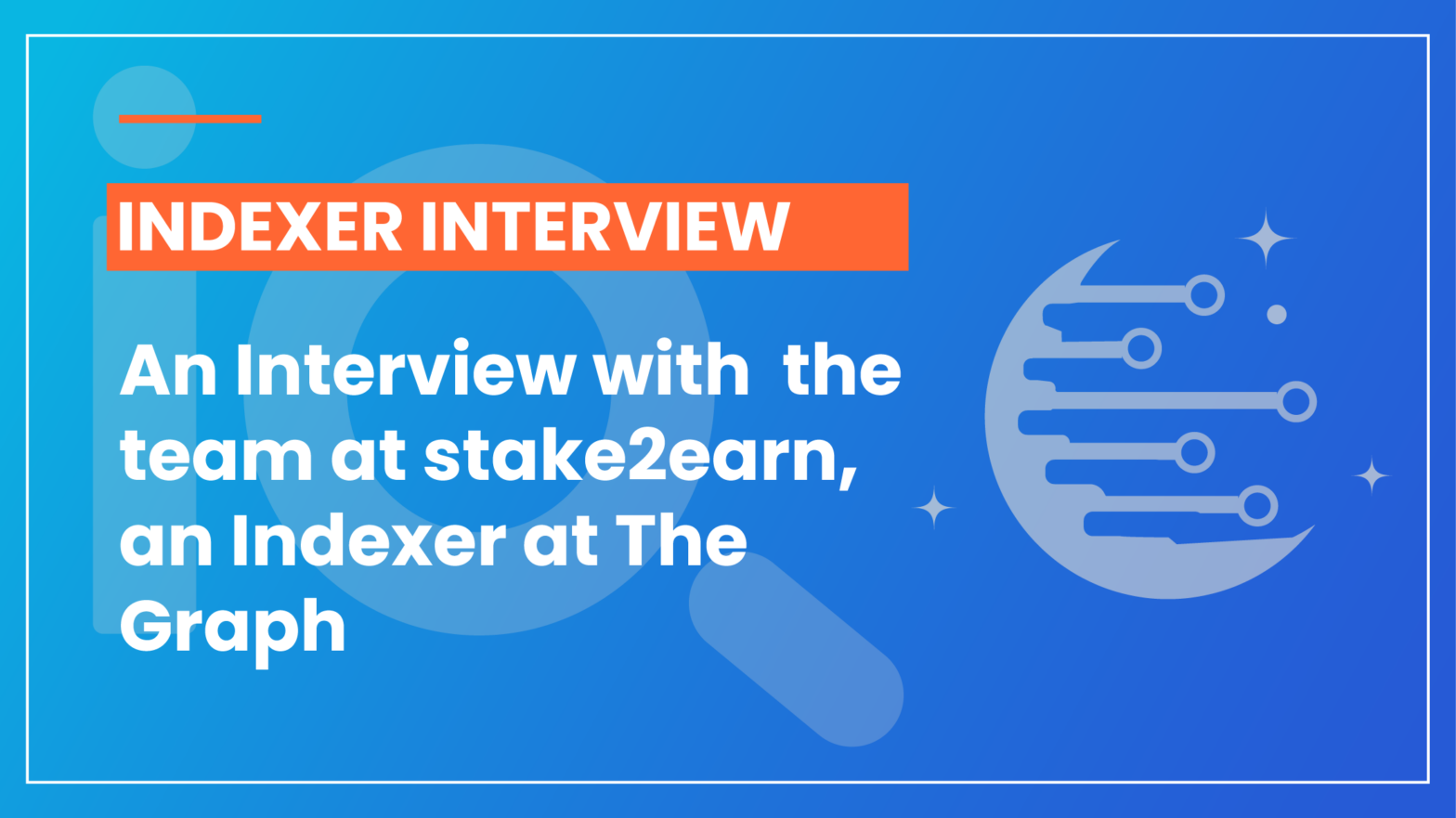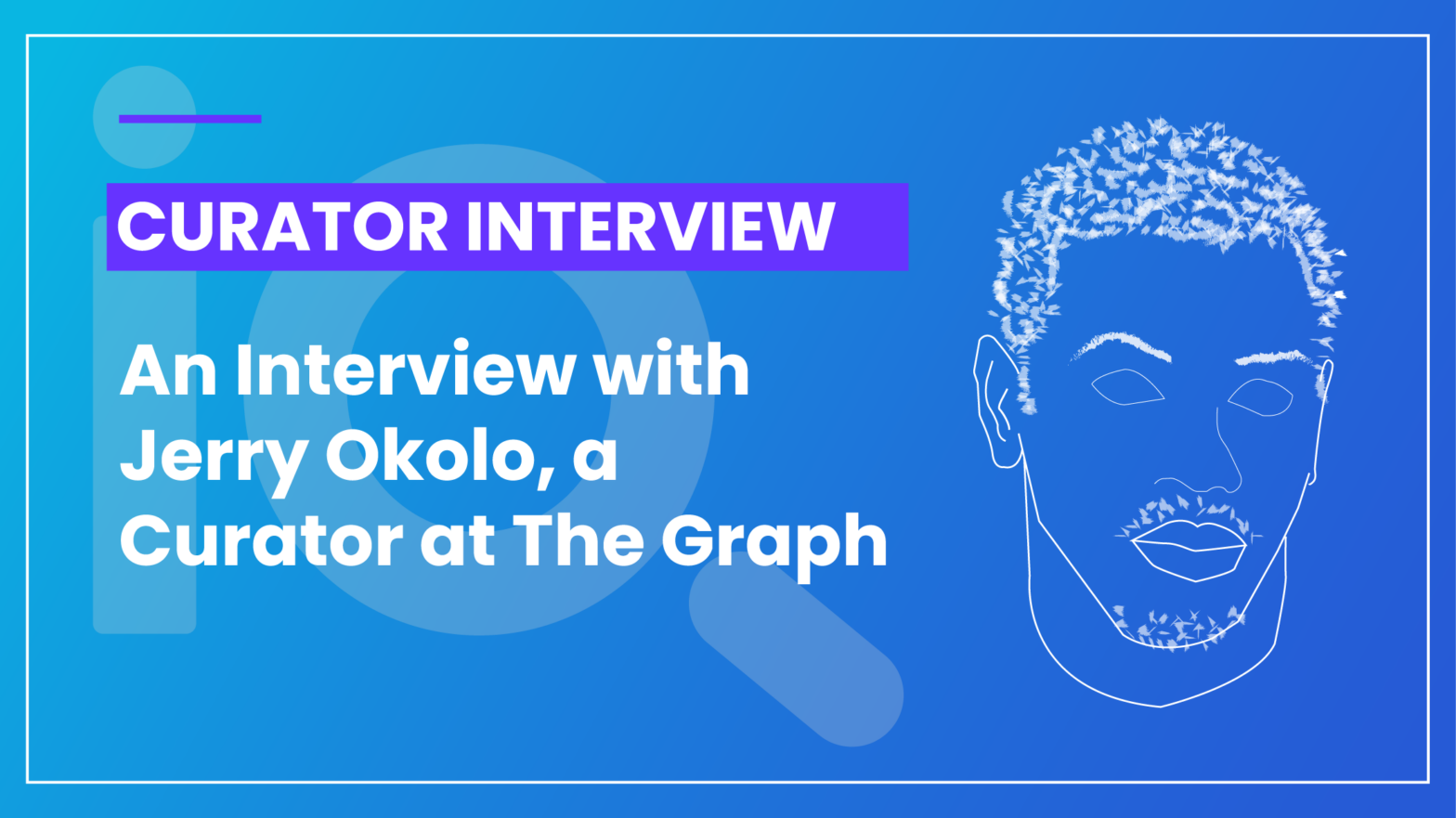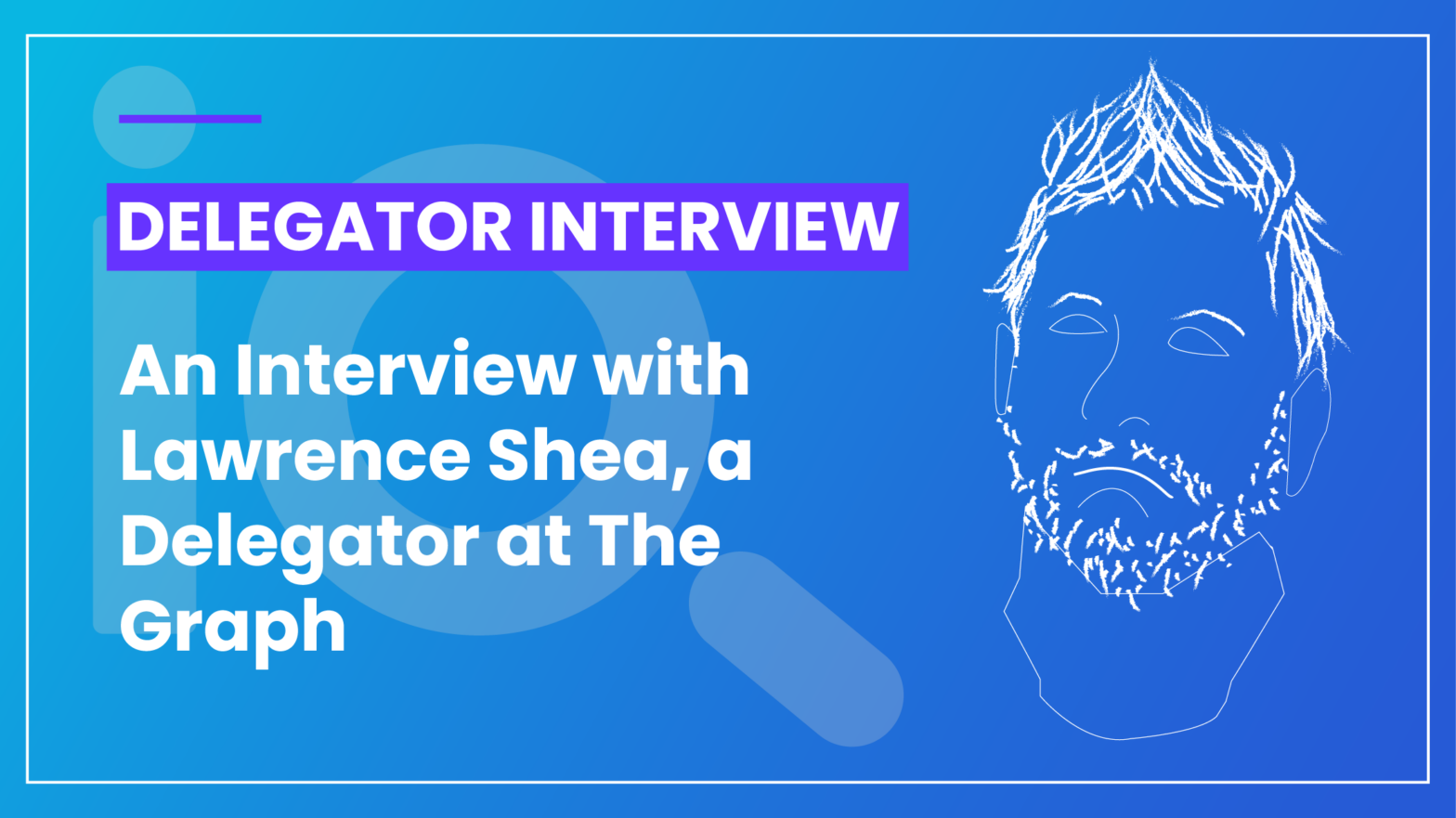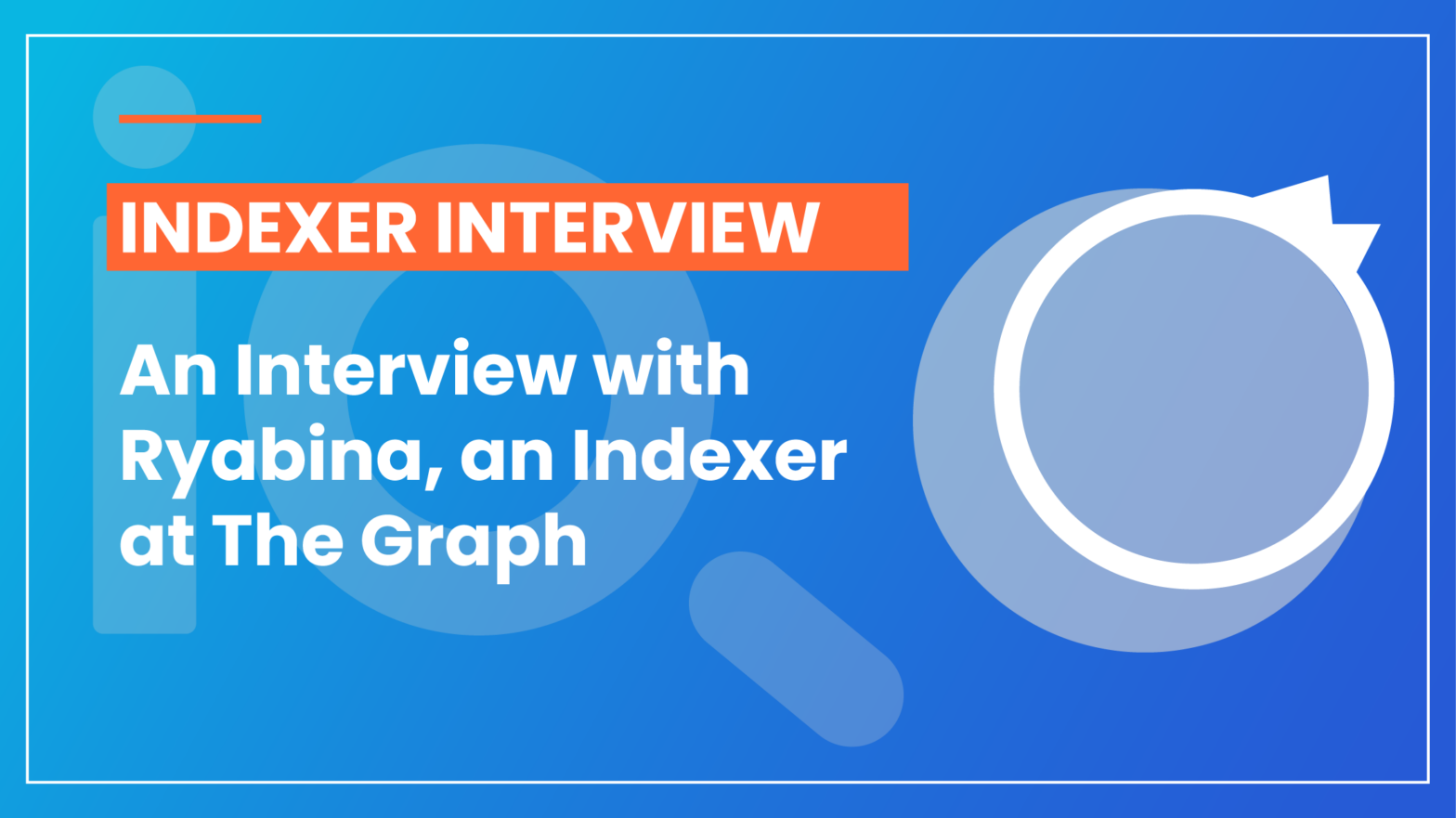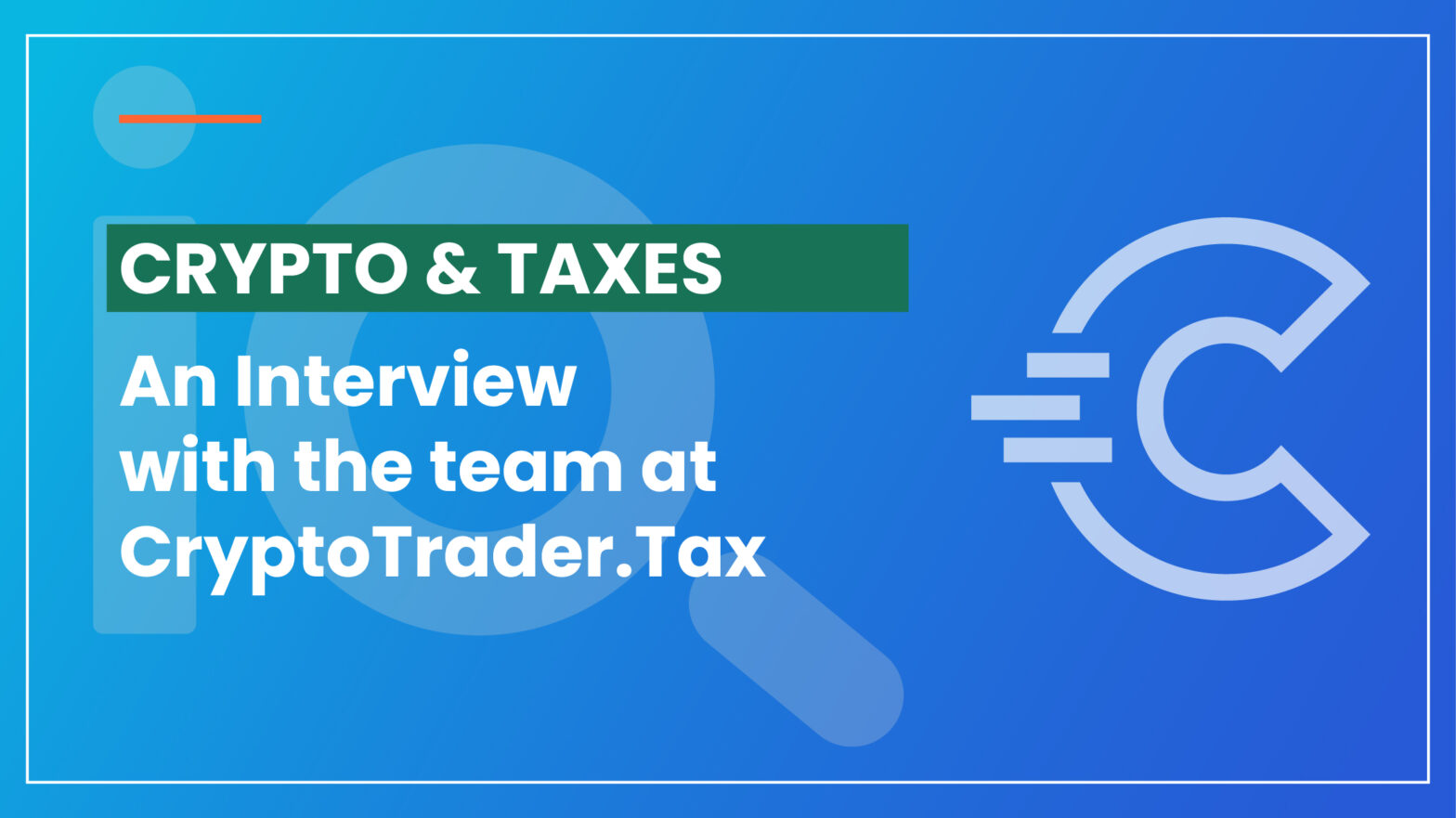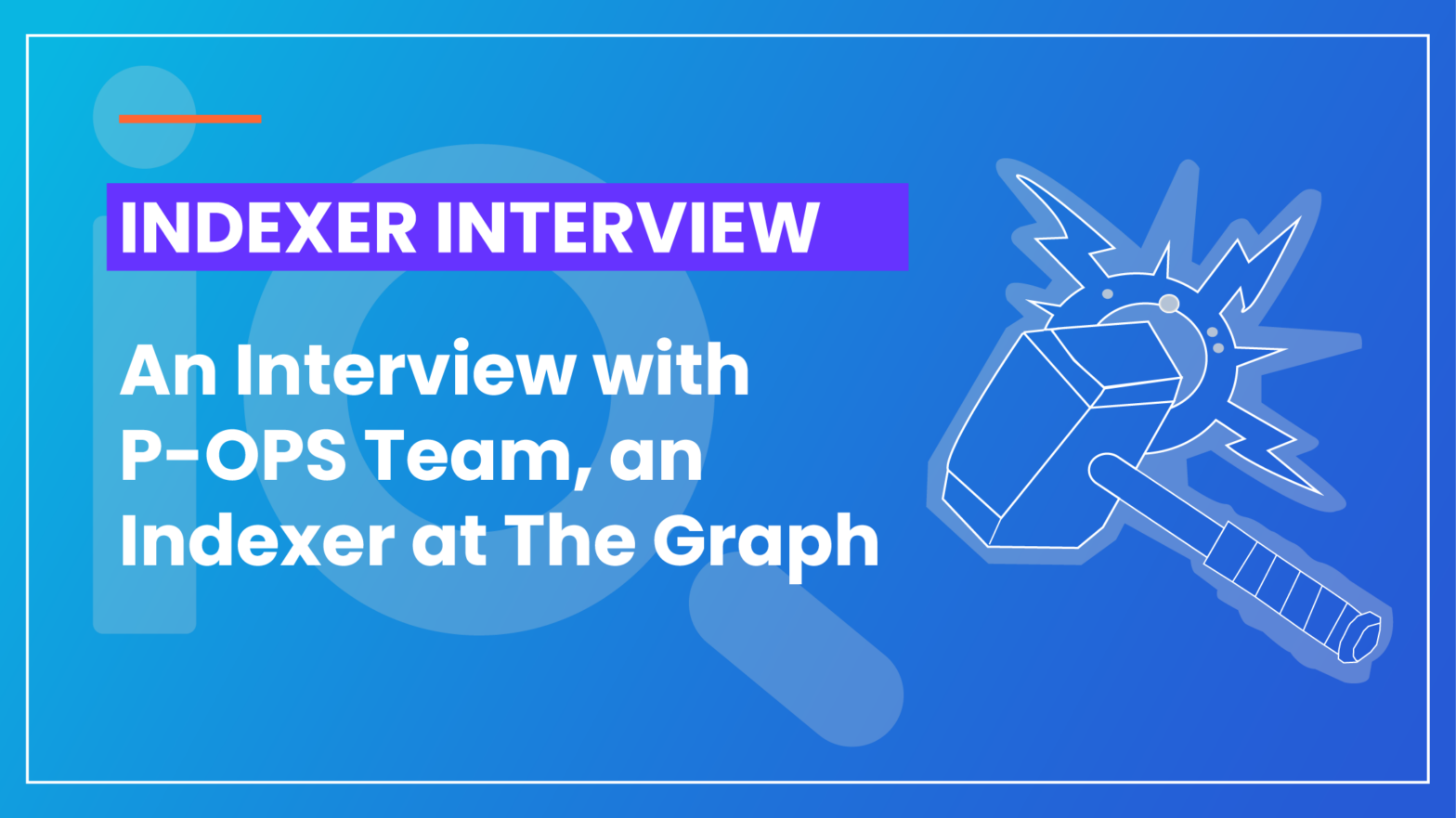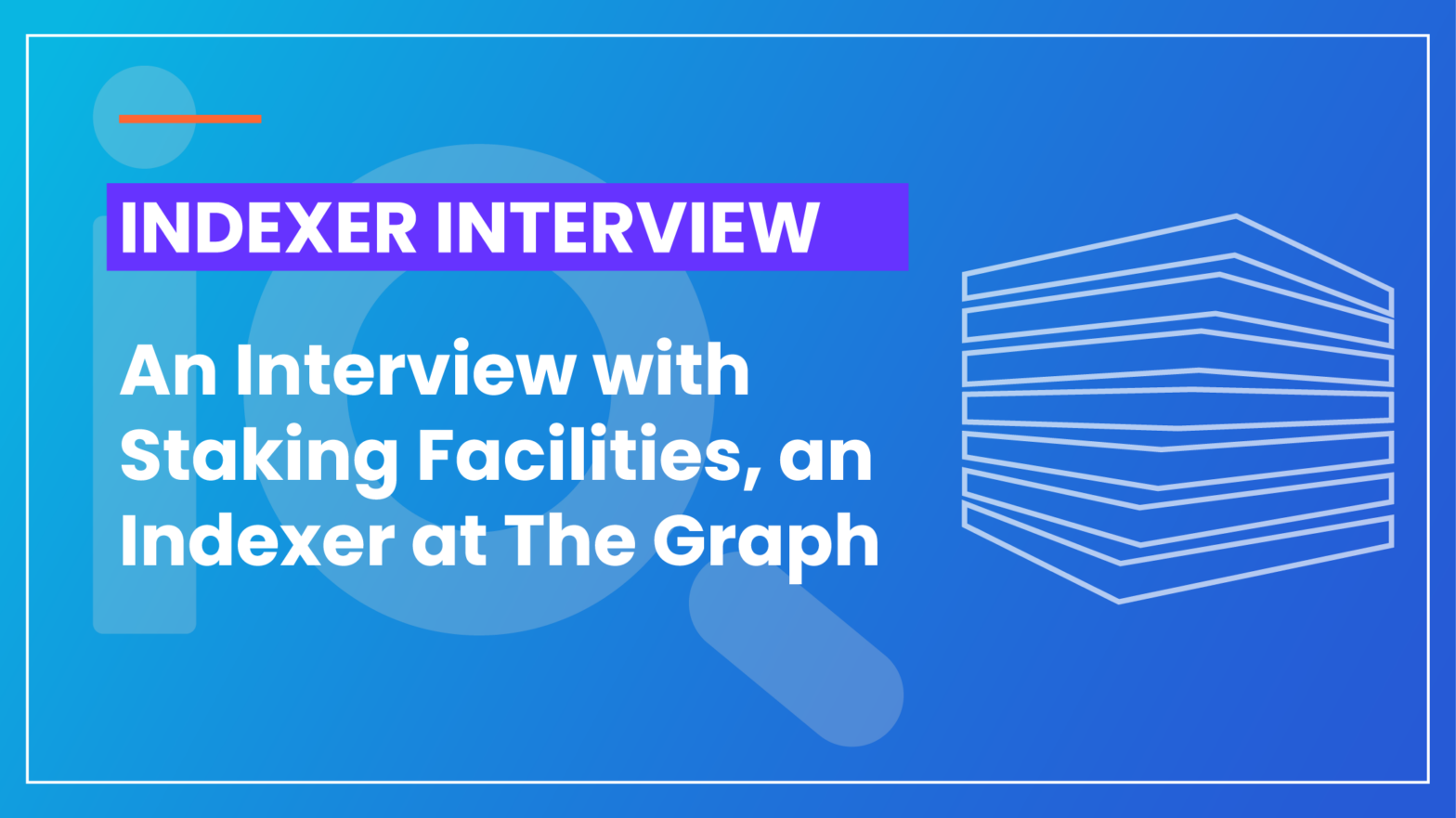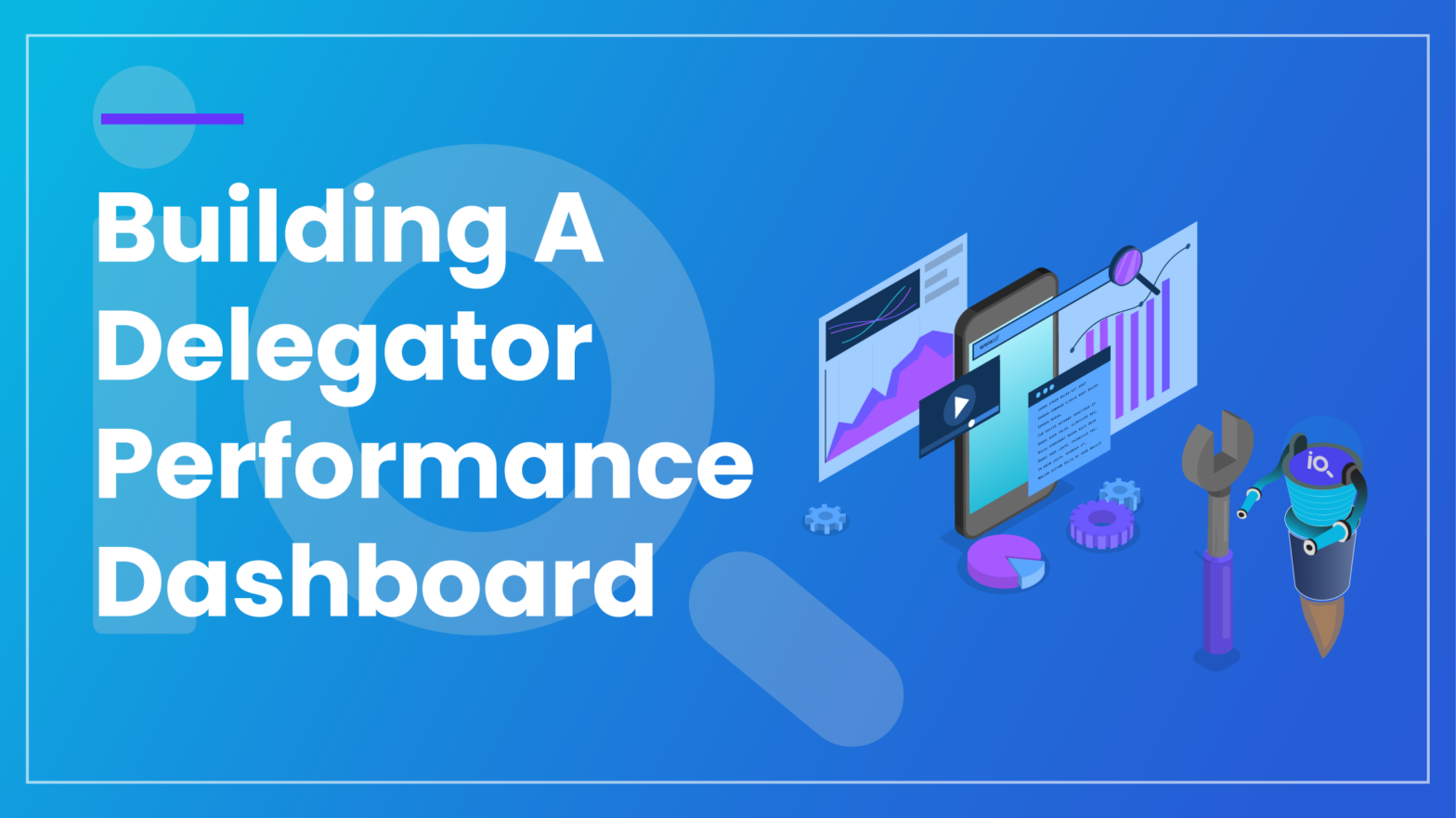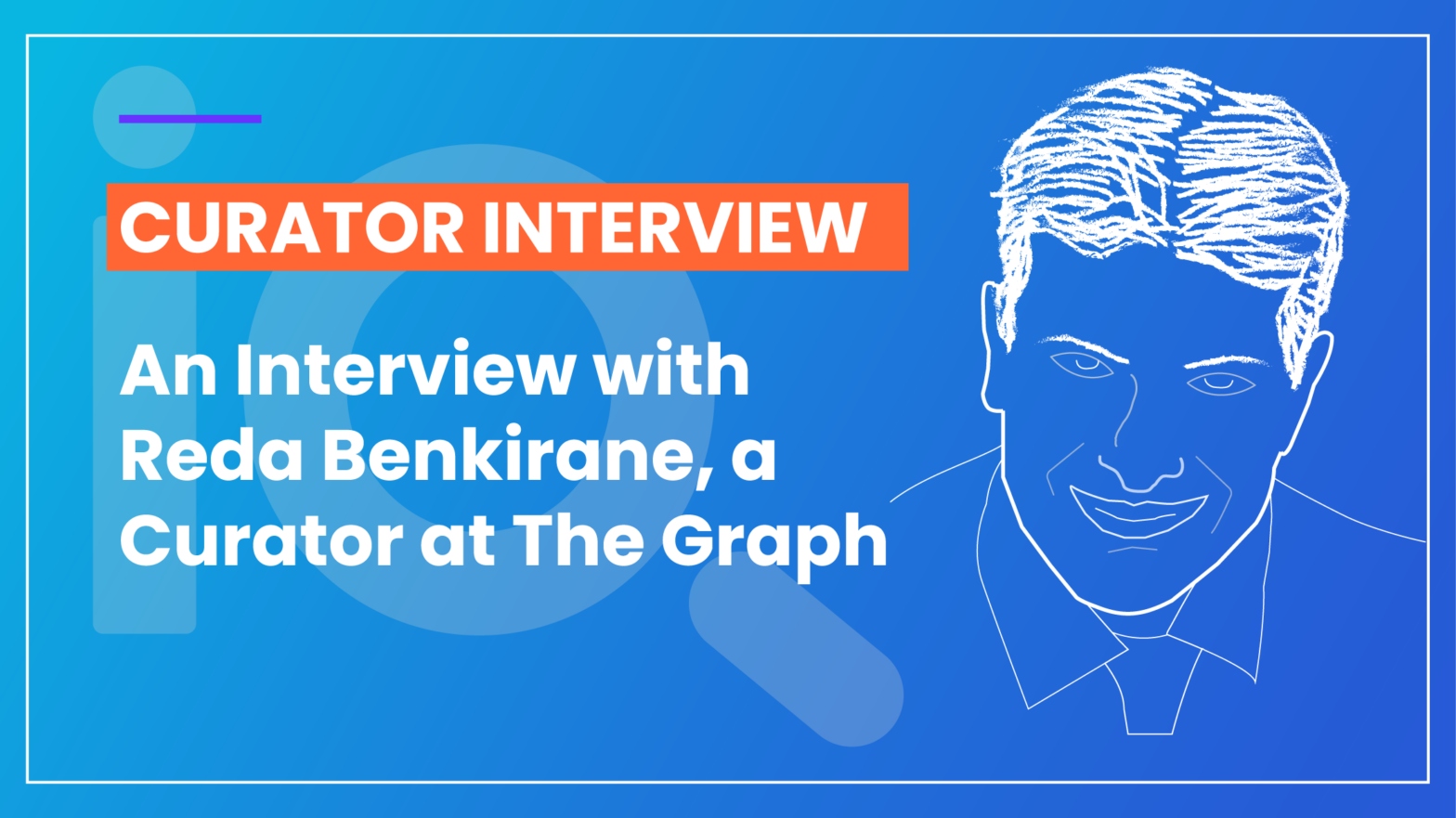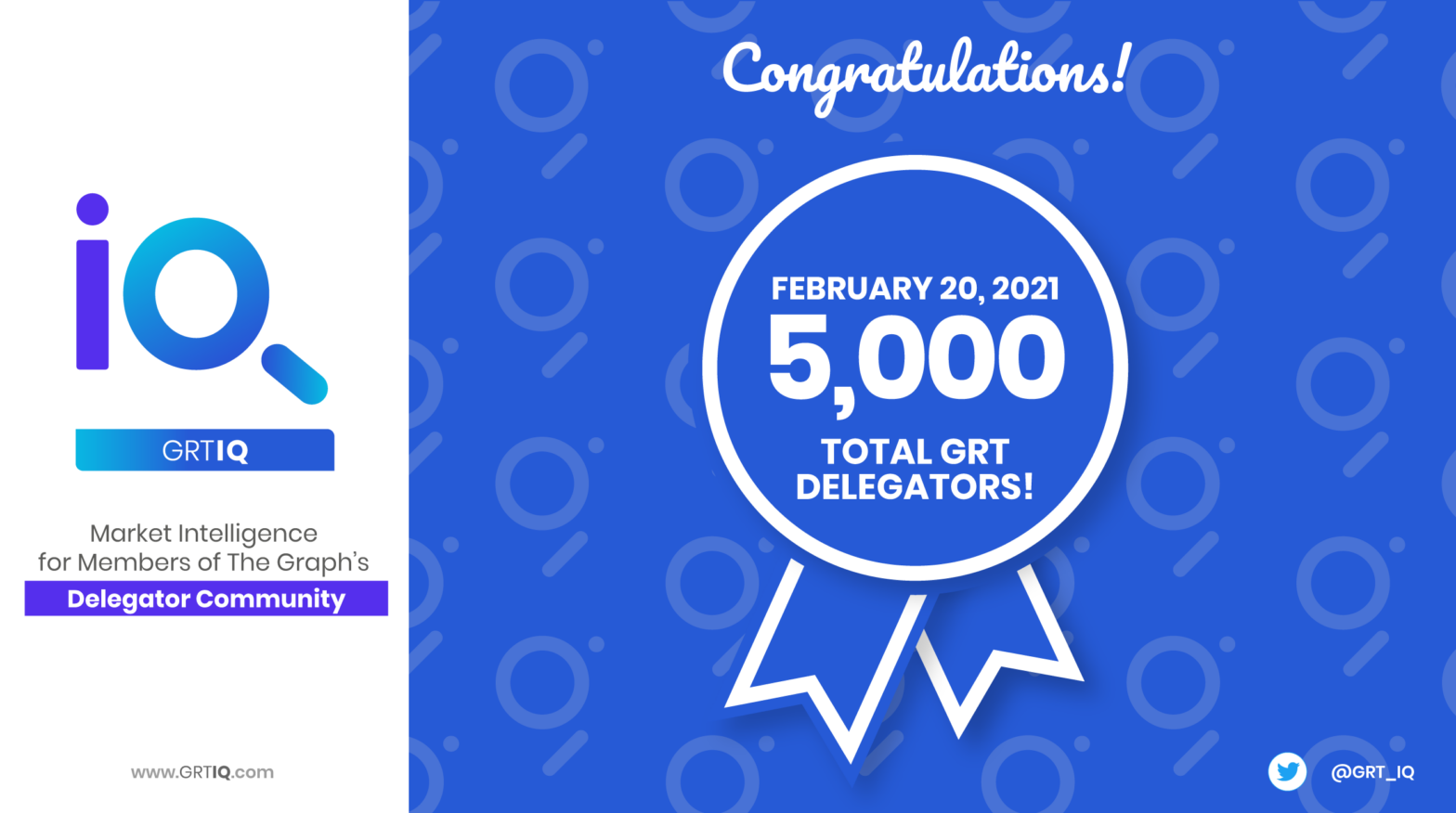We asked Lawrence Shea, a software developer and Delegator with The Graph, for his unique perspective of how The Graph is impacting his work, the market, and the industry.
Individuals can face several risks when staking, or “delegating,” GRT and becoming a Delegator with The Graph.
It is important that individuals do their own research and evaluate all the risks before making the decision to become a Delegator. One potential risk is a general lack of understanding of what The Graph is, who it serves, and how it is used in the marketplace.
To help Delegators navigate the risk associated with not understanding The Graph, we interviewed Lawrence Shea, a Delegator who also has professional experience working as a software developer. Lawrence is able to use his experience with database architecture and management to help Delegators understand the present and future of The Graph.
Note: Neither GRTiQ nor Lawerence Shea offers investment advice. You should consult with a professional investment advisor if you have questions related to investing in cryptocurrencies.
GRTiQ: Before joining The Graph community as a Delegator, what was your experience in crypto?
Lawrence: I have been an interested observer in crypto for a long time, and I actually mined a bitcoin, which I promptly lost, around 2009. But I was not fully an active participant until DeFi Summer.
I’ve been working in software development and database architecture and management for about a decade, so I have always had an interest in these types of things.
GRTiQ: Are you able to explain how a dApp is different from other apps?
Lawrence: For me, it all comes down to centralization.
An app is owned by a company or individual, and so it is subject to that entity’s whim when it comes to things like censorship, which features are added, and what, if any, content is allowed onto the platform. From a hardware perspective, it is also required that the entity buys, builds, and maintains that infrastructure.
Conversely, a dApp can be governed in a truly decentralized way: if you own a token, you own a vote. This provides a degree of freedom from things like censorship, although it is still possible that individuals could vote to remove content; but it would be a community decision, not one made by some faceless cabal.
Additionally, a dApp can be deployed to the Ethereum network, and so there is less, or no, need to purchase your own centralized hardware, which you would be required to pay for and maintain. This is actually an important benefit a lot of non-technical people may overlook, and not just from a time and cost perspective – those machines are typically owned by a third party, so a traditional app has the possibility of being censored from that point as well. The recent example of Parler and Amazon exemplifies this.
GRTiQ: Many Delegators want to better understand the use cases for The Graph with consumers, such as dApps. How do you explain the ways consumers are currently benefiting from using The Graph?
Lawrence: From my perspective, any dApp that needs meaningful access to on-chain data will need to continually buy and use The Graph. The example I like to give to folks is “dApp Tinder,” because I feel anyone under the age of 40 is familiar enough with how Tinder works.
Let’s say you are building Tinder on the blockchain, and you want to show users their matches. Anytime a user goes to the “matches” tab in your Tinder dApp, you would have three options for how to display this data to the user:
-
- You could search the Ethereum network block-by-block, looking for matches between this user and an unknown number of potential matches, then display that to the user. This would obviously take a very long time.
- You could build your own indexing/querying application. This would mean continually searching the Ethereum block-by-block, then store matches in an index (think of an index in a book, it just points to where the data can be found), then you would need to continuously query your own index in order to display information to users.
- Lastly, you could simply purchase GRT and then purchase the data you need for your users from The Graph.
As a software developer, I would choose option three. And this is why I am so confident in The Graph.
Beyond the ease of access to data provided to dApps, as a Delegator I also love the inherent use-cycle of The Graph: dApps need some GRT today, dApps will need some GRT tomorrow, dApps will need some GRT from now on and forever because they must spend it in order to deliver data to their users.
There are other use cases, too. For example, if a dApp wants to provide others with access to their own data, they could build their own indexer/querying layer, and then they would have to maintain that indefinitely, or they could simply build a subgraph and direct users to it – this is what Aave does.
GRTiQ: Can you give a specific example of a dApp you use, or that others might use, and how it’s already leveraging The Graph?
Lawrence: Yes, Uniswap has its own subgraph, which they use to display data on uniswap.info. You can also see this in a tweet from Uniswap or on The Graph’s homepage.
Aave may or may not use their own subgraph (couldn’t immediately find confirmation), but they do provide documentation on how to use the Aave subgraph on their website.
GRTiQ: How should Delegators think about the difference between indexing and querying?
Lawrence: Think of indexing just like the index in the back of a textbook. The book contains a lot of information, and you may need to quickly find a particular piece of it. You could scan the book, page by page, looking for what you need, or you could go to the back of the book, find the reference with the exact page number, and then turn to that page. This is identical to how databases work. Developers dump millions and millions of rows of information into the blockchain, and there becomes this need to create indexes for quick lookups. This is a bit of an oversimplification, but that’s the job the Indexers at The Graph perform every day. It requires expensive hardware and experienced software developers to do this job.
Querying, on the other hand, is simply looking up data. Going back to the Tinder dApp example I provided earlier, querying is showing a user their matches. Being more technical, a query is a GraphQL API call made to The Graph Network.
GRTiQ: In simple terms, how do you define what a subgraph is?
Lawrence: In the simplest terms, a subgraph is a set of instructions on how to extract, index, and query a particular dApp’s information from the blockchain.
GRTiQ: Why can’t “consumers” do this work themselves? What is it about using The Graph that creates demand for this service?
Lawrence: I suppose consumers could if do it themselves if they wanted to. But it is not worth the time, effort, or money.
As a software developer, if I am tasked with building a website, my first thought isn’t that I need to invent a web browser, a database, or computers. My first thoughts are to think about what tools already exist and that I can leverage. In other words, I ask what do I have to build that truly does not exist right now? This is so I can make the job as simple and affordable as possible.
This is what The Graph does for dApps – it eliminates so much of the foundational elements required by dApps to serve users.
GRTiQ: How do you think about the issue of competition for The Graph?
Lawrence: It is totally possible and likely that competition will emerge at some point. There are none, to my knowledge, now.
Successful products will always be imitated, and this is the nature of a free and open market. Look at Amazon, and how every big tech company is now trying to compete with it, with varying levels of success.
In one of the interviews with The Graph’s founders, I believe it was the Bankless podcast with Taniv, he said that building The Graph was a three-year project. This means that entry into the market might come with some significant barriers.
As I think about it, one competitor I could see in this space would be Etherscan, as they provide a somewhat similar product, and may be able to roll something out quickly to compete with The Graph. They have some experience here, and so I would consider anything they release as a potential competitive offering.
Aside from that, I think The Graph has a lot of time to improve the product and extend its first-mover advantage. So long as they continue to do things right, they should remain the #1 provider for a long time to come.
So, in short, I am not very worried about competition.
GRTiQ: When you think about the future of The Graph, what do you envision?
Lawrence: I think that over the coming months and years we will see:
- Existing dApps, that have their own code to perform the functions The Graph can provide, will slowly start to convert over to The Graph. They will want to save the time and costs of doing it themselves.
- New dApps will likely all use The Graph going forward. In fact, we may see more dApps enter the market because of how The Graph enables them to operate. Over time, any dApp which needs or provides meaningful on-chain data will require The Graph.
- I see dApps starting to use The Graph to index data they pulled from Chainlink (LINK), to reduce the number of new Chainlink queries they need to make.
- Lastly, I also anticipate seeing dApps continuing to find unique ways to leverage The Graph to lower their costs and fees associated with their dApps, recognizing opportunities for competitive advantage.
GRTiQ: What challenges to The Graph should the Delegator community be aware of?
Lawrence: Frankly, I don’t really see many challenges on the horizon. The main challenge, if I had one, would be related to market adoption. However, as a software developer, I see a great need for The Graph or a solution like it, so I am not seriously concerned about issues related to market adoption.
GRTiQ: What’s the next big thing the Delegator community should be watching for regarding The Graph?
Lawrence: I think the roadmap The Graph has provided is being followed. As examples, they have provided a roadmap regarding curation, more subgraphs being released onto the network, queries being made on the network, and so forth. As more and more items are rolled out, I anticipate more and more GRT to be locked up in the protocol and removed from circulation. This will likely have an impact on the GRT token price – something Delegators will want to pay attention to.
Lawrence Shea (LinkedIn) is a software developer and Delegator at The Graph.
WANT MORE?
Receive New Content
Direct to Your Inbox
DISCLOSURE: GRTIQ is not affiliated, associated, authorized, endorsed by, or in any other way connected with The Graph, or any of its subsidiaries or affiliates. This material has been prepared for information purposes only, and it is not intended to provide, and should not be relied upon for, tax, legal, financial, or investment advice. The content for this material is developed from sources believed to be providing accurate information. The Graph token holders should do their own research regarding individual Indexers and the risks, including objectives, charges, and expenses, associated with the purchase of GRT or the delegation of GRT.
©GRTIQ.com
